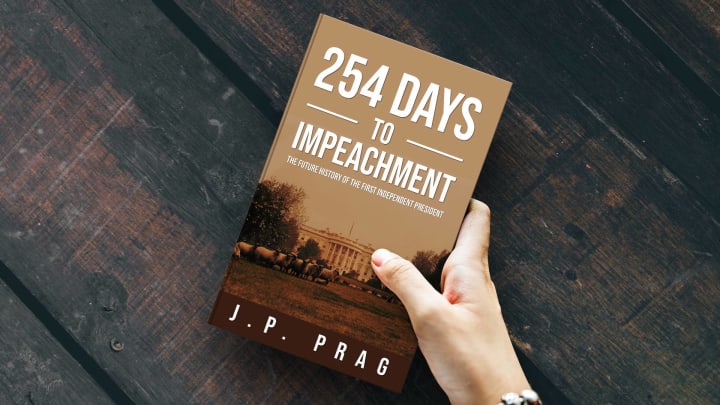
February 26th (Washington, D.C.) – A few short weeks after making a request to do so, the President was able to appear before a joint-session of Congress to give a State of the Union address. However, this was a speech unlike any given since becoming formally known by that name in 1947—which coincidently was the first time the speech was broadcast on television. The last President to have a State of the Union during their first year in office was John F. Kennedy—although his successor Lyndon B. Johnson had one after Kennedy was assassinated and Gerald Ford also had one when Richard Nixon resigned. However, according to a Congressional Research Service report (https://fas.org/sgp/crs/misc/R44770.pdf) on the history of the State of the Union:
Since 1981, Presidents have addressed a joint session of Congress closely following their inauguration, but not as an official “State of the Union” address.
As such, Presidents like Reagan, Bush (“H.W.” and “W.”), Clinton, Obama, Trump, Biden, and others have chosen to give a more focused and stage-setting oration after they had only been in office for a few days. Of course, this President dramatically altered the world during the first hours of the administration. Because of these actions and the intentions of the White House, the President forcefully insisted that this be called a “State of the Union” and that all protocols be followed—including inviting members of the Supreme Court, the Joint Chiefs of Staff, the President’s Cabinet, and additional guests.
The Speaker of the House must have been fascinated by the request and acquiesced, quickly putting together the session. Perhaps the Speaker and the other members of Congress thought this would be a chance to calm the rhetoric down and for Congress and the President to get on the same page? After all, in that last first-year speech by President Kennedy he told Congress, in part:
You are among my oldest friends in Washington... I am confident that that friendship will continue. Our Constitution wisely assigns both joint and separate roles to each branch of the government; and a President and a Congress who hold each other in mutual respect will neither permit nor attempt any trespass.
If Congress was expecting a Kennedy-like hand outstretched in friendship—especially since the President did not provide a copy of the speech beforehand—they were in for a rude awakening.
Speech Begins with Acts of Defiance
Not wasting a breath, the President launched into the State of the Union by asserting:
Article 6 § Clause 3 of our Constitution requires every member of Congress in this room to take an “Oath of Office”, an oath that is laid out by law that was created by your predecessors and detailed in U.S. Code Title 5 § 3331. In that text, you wrote that you will “faithfully discharge the duties of office” and to not do so is a punishable violation, including with fines, removal from office, and imprisonment. I’ll spare you the nitty gritty of Title 5 § 7311 and Title 18 § 1918, but let me bring your attention to a particularly important clause.
At this point, the tension in the room was already palpable. Undeterred, the President quoted the aforementioned clause which states, in part, that it is illegal if anyone in Congress:
... participates in a strike, or asserts the right to strike, against the Government of the United States...
The bewildered members of Congress gave each other baffled looks as if asking where this was all going, but otherwise remained silent. At this point, the President turned to the Justices of the Supreme Court that were in the front row and stared down at them with what can only be described as righteous fire. Never breaking eye contact with them, the President said:
When Supreme Court Justice Antonin Scalia died in 2016, President Barack Obama did his Constitutional duty by presenting Merrick Garland as a nominee to replace him. The Senate’s job was simple: interview and vet the candidate, then cast a yay or nay vote. That was all there should have been to it! Instead, then-Senate Majority Leader Mitch McConnell decided to block the candidate from even getting a chance to talk to Congress, never mind voting for or against him, and kept that position open until his preferred candidate, Donald Trump, was President and could nominate who they wanted. And that is the only reason Neil Gorsuch ended up sitting on the bench of the Supreme Court.
Per usual, the Supreme Court Justices remained stoic. During any State of the Union, the Justices have never been seen clapping, reacting, or even smiling if possible in order to not give the appearance of partisan politics. Despite polls showing that the public views the bench as having become highly politically divisive, the members themselves almost always attempt to present as neutral bodies. This is especially necessary since many policies announced during the State of the Union may end up in front of them. At that point, the President broke eye-contact with the Justices and shifted focus to the Majority Leader, saying:
Let me be clear: what Mitch McConnell did and the rest of the Senate allowed was a crime. He knowingly led a strike against the government, which was a violation of the Oath of Office. If I were President then, I never would have allowed that to stand and would have placed McConnell under arrest. and if whoever replaced him refused to do their job, I would have done the same to them.
The unease was building, and many people in the room peered down at the members of the Supreme Court to gauge their reactions. Since they had none, everyone turned back to the President who said:
Should this Congress plan to do something similar to me, I am warning you now that I will execute the law as I am required to do per my oath, and I will see you jailed. You can vote down all my nominees, that is fine, that is your right. But don’t you dare believe for a minute that I will allow you to circumvent the laws of this great nation for your own personal and/or Political Party gain ever again.
Surprisingly, there was actually a smattering of applause heard during this bombastic viciousness. Most was from the President’s own cabinet, but there was also a reaction noted from the few fellow independents in Congress, as well as some of the more extreme elements within the Democratic and Republican Parties. Otherwise, there was some mumbling and even a couple of “boos” were heard, though their own colleagues seemed to shut those down without the President or Speaker having to intervene.
President Tried to Cool Things Down as Tempers Flared
With most of Congress riled up and visibly upset, the President then attempted to change the cadence of the speech. Instead of digging in further, the President sought to raise the mood with a reminder that despite all the media hype and a perception that everything in the country is split fifty-fifty, there is actually much more agreement overall, even within the halls of the Capitol Building. As the President said:
The story that is never told is how much the members of Congress have in common with each other, and how often they agree. I took a look back at the 116th Congress that served from January 3, 2019 to January 3, 2021. It was as divided as anyone could expect of our legislature, with Democrats holding a tiny margin in the House of Representatives and Republicans having the slimmest of advantages in the Senate. And then the COVID-19 pandemic happened, followed by a contentious election where the standing President declared the whole thing a farce and stirred up an attempted coup with the assistance of members from this very chamber. To say that people were at each other’s throats was not hyperbole; it was happening for real.
If this was the President’s attempt at calming things down, it was not resonating. A number of those very members who lived through the described events are still representing their districts to this day, some having survived investigations by the then-Justice Department. However, the President brought it back to the main point:
When I looked through all 344 bills that were passed as law, I was surprised to see that 83% of the time these bills were approved either with unanimous consent, without objection, just with voice vote, or many other similar methods. But this is the real narrative here that is never reported: that Congress not only does a lot of work together, but does so in complete agreement. There is no reason that this cannot be Congress’ message to the nation, nor any reason that we cannot do the same together.
We fact-checked the statistics the President quoted and found them to be true, but in need of qualification. For instance, although that level of agreement does exist, over a fifth of the acts passed by Congress were for the naming of post offices alone—and that does not include branding other facilities. Most of what Congress did pass was mundane day-to-day operations and rather inconsequential. Also, the President only looked at what became law; it did not include the plethora of bills that were passed by one chamber or the other and then there was no movement on them whatsoever, or the ones that involved both chambers and then still failed. Also, it must be noted that Representatives and Senators usually only introduce bills that they know are going to at least pass their own chamber. If the votes are not there, they do not even bother. This is the same reason for using tools like “voice vote”, “without objection”, and “unanimous consent”; it is known that the bill is going to pass because there are enough votes, so Representatives and Senators either do not want to get on record or do not want to bother with the paperwork.
Executive Branch Attempts to Tell Judicial Branch How to Run
The President brought up similar measures for the results from the Supreme Court, noting how more often than not cases were decided unanimously and mostly did not fall on ideological lines. It was just when they have done so that it made the headlines and further inflamed partisan beliefs. At this point, the President did something never before seen during a State of the Union address: sign an Executive Order. Said the Commander-in-Chief:
Although the people in this hall are used to being the ones to create legal precedent, I would like to try my hand at it as well.
With that, the President put pen to paper to bring the act into force. In this Executive Order, the President was making an argument for an approach the administration is calling the “Assessment of Harm” that is to be used when evaluating the validity of a law or Executive Order—the irony seemingly lost on the President. The leader of the free world has directed various law enforcement and quasi-court agencies that fall under the purview of the Executive Branch to consider whether a directive should be allowed to stand while going through objections based on a hierarchy. By that grading, the checks should go:
- People
- Environment
- Corporations and Organizations (including religious ones)
- State Governments
- The Federal Government
In order words, if a new law is created and it is questionable whether there should be an injunction or not, the first check should see if it harms people, then the environment, and then the rest so that the Federal Government has the least consideration. It seems like a simple concept, but the court’s current methods of making this assessment are quite opaque. Further, since the President cannot order the Judicial Branch to do anything, the Executive order only “recommends” that the Judicial Branch adopt the same guidance. That said, the President may be facing immediate pushback just by placing religion half-way down the list, especially given the current makeup of the Supreme Court.
Speech Closes Out with Dire Economic Warning
This would be the only Executive Order the President gave during the address. After that, the speech actually turned more “traditional” with the President laying out an intended agenda and various programs the White House would like to see Congress create or destroy.
We will be reviewing the key highlights in a set of forthcoming articles with important analysis from our team of political experts. Please return soon to see what the President plans to push Congress into doing next!
At the end of the speech, though, the President made one thing clear for the Representatives and Senators in the room. From this point forward, the President would only agree to continuing resolutions to keep the government open until September 30th, the end of the fiscal year. Anything that attempted to underwrite the government beyond that point would be vetoed, but so long as it stayed in that timeframe then the President would not disagree with the content. The President plainly stated that a 100% complete federal budget must be sent to the Oval Office for next fiscal year by that same date, otherwise the government would be shut down until one passed.
Before the President was inaugurated on January 20th and even prior to this Congress being sworn in on January 3rd, the prior Congress did pass several continuing resolutions. While much of the government is already funded until that September 30th date, some parts are only covered for the next several months. Democrats and Republicans basically bet that their own Party would be in complete control of Congress and the White House and that they could finalize their own agendas once they had settled in. Unfortunately for them, each chamber of Congress went to a different Party and the White House now sits in the hands of an independent who will not be making this accounting process easy for them.
Closing out the State of the Union, the President presented a prepared list of demands for the forthcoming budget that either must be met or there must be enough votes to override a veto. We will be discussing this in detail in an upcoming article, but suffice to say that with Congress as split as it is that there is not enough agreement to create a budget that could meet either of these situations. Still, there are over seven months before that deadline, so surely that is more than enough time for an appropriate and reasonable compromise to be found.

The above piece is an excerpt from the speculative fiction novel 254 Days to Impeachment: The Future History of the First Independent President by J.P. Prag, available at booksellers worldwide.

Learn more about author J.P. Prag at www.jpprag.com.

254 Days to Impeachment is a work of mixed fiction and nonfiction elements. With the fiction elements, any names, characters, places, events, and incidents that bear any resemblance to reality is purely coincidental. For the nonfiction elements, no names have been changed, no characters invented, no events fabricated except for hypothetical situations.
About the Creator
J.P. Prag
J.P. Prag is the author of "Aestas ¤ The Yellow Balloon", "Compendium of Humanity's End", "254 Days to Impeachment", "Always Divided, Never United", "New & Improved: The United States of America", and more! Learn more at www.jpprag.com.






Comments
There are no comments for this story
Be the first to respond and start the conversation.